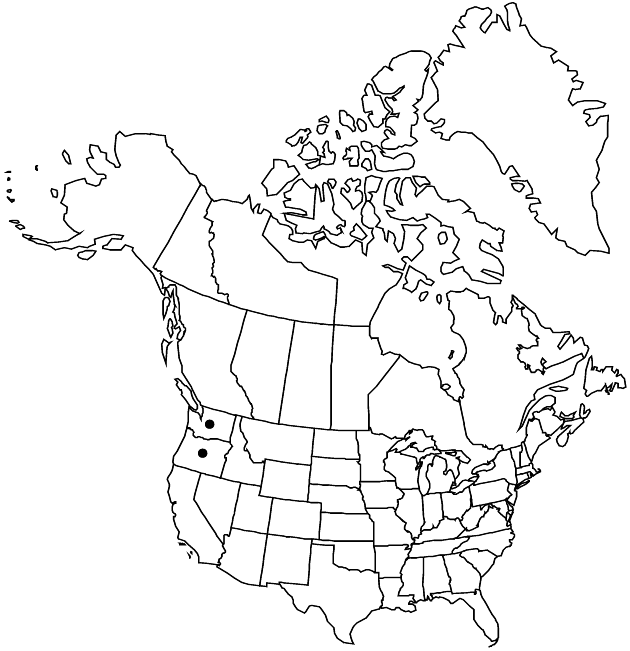Packera flettii
Phytologia 49: 46. 1981.
Perennials, 10–40+ cm; rhizomatous (rhizomes horizontal to erect). Stems 1 or 2–5 (often scapiform), loosely clustered, glabrous or leaf axils sparsely hairy. Basal leaves (and proximal cauline) petiolate; blades obovate to ovate or sublyrate, 30–60+ × 10–40+ mm, bases tapering, margins deeply dissected or pinnatifid, ultimate margins crenate to crenate-dentate. Cauline leaves abruptly reduced or 0 (sessile; ovate to obovate, dissected or pinnatifid). Heads 4–10+ in subumbelliform cymiform arrays. Peduncles inconspicuously bracteate or ebracteate, glabrous. Calyculi 0 or inconspicuous. Phyllaries (8–)13, light green (tips yellowish), 4–7 mm, glabrous. Ray florets 5 or 8; corolla laminae 5–10 mm. Disc florets 20–30+; corolla tubes 2.5–3.5 mm, limbs 2.5–3.5 mm. Cypselae 1–1.5 mm, glabrous; pappi 4–4.5 mm. 2n = 40.
Phenology: Flowering early Jul–mid Aug.
Habitat: Exposed slopes, rocky or gravelly soils
Elevation: 700–2000 m
Distribution

Oreg., Wash.
Discussion
Packera flettii is known from the Olympic Mountains and near Mt. Rainer in Washington and coastal mountains of Clatsop County, Oregon. It has a chromosome number unique in the genus and is not known to hybridize with other species of Packera.
Selected References
None.